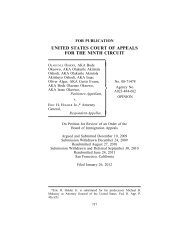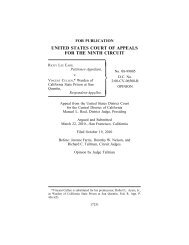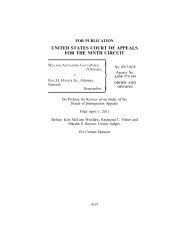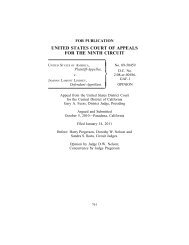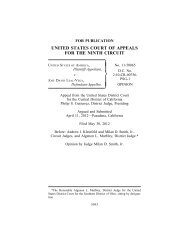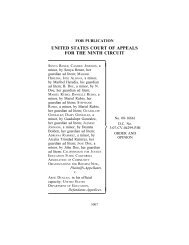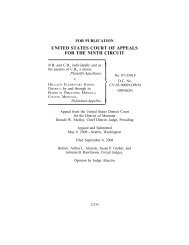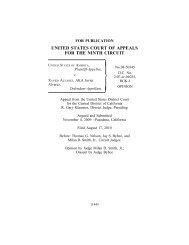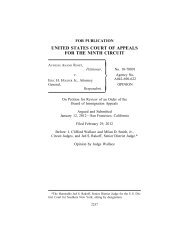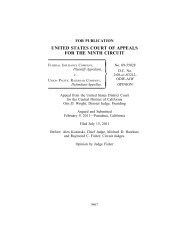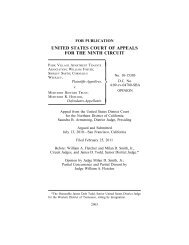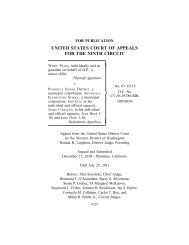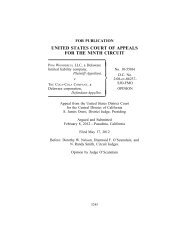kristin rossum v. deborah patrick - Ninth Circuit Court of Appeals
kristin rossum v. deborah patrick - Ninth Circuit Court of Appeals
kristin rossum v. deborah patrick - Ninth Circuit Court of Appeals
Create successful ePaper yourself
Turn your PDF publications into a flip-book with our unique Google optimized e-Paper software.
17408 ROSSUM v. PATRICK<br />
unreasonable in its ultimate conclusion that there was no<br />
Strickland violation, but also in its conclusion that Rossum<br />
had not made an adequate showing for an evidentiary hearing<br />
in state court. Then I will consider what remedy is appropriate.<br />
B. The Merits <strong>of</strong> Rossum’s Strickland Claim<br />
Rossum argued that a competent attorney would not have<br />
conceded that fentanyl caused de Villers’s death without first<br />
having his autopsy specimens tested for metabolites <strong>of</strong> fentanyl.<br />
The California Supreme <strong>Court</strong>, in considering Rossum’s<br />
habeas petition, asked itself “whether, assuming the petitioner’s<br />
factual allegations [were] true, the petitioner would be<br />
entitled to relief.” People v. Duvall, 9 Cal. 4th 464, 474<br />
(1995). The court’s summary denial <strong>of</strong> Rossum’s petition<br />
without issuing an order to show cause or holding an evidentiary<br />
hearing reflected its determination that “the claims made<br />
in the petition [did] not state a prima facie case entitling the<br />
petitioner to relief.” In re Clark, 5 Cal. 4th 750, 770 (1993).<br />
The question is whether, under § 2254(d)(1), given the facts<br />
alleged by Rossum before the state court, the court’s summary<br />
rejection <strong>of</strong> her claims was, in light <strong>of</strong> the entire state court<br />
record, an unreasonable application <strong>of</strong> federal law. See Pinholster,<br />
131 S. Ct. at 1403 n.12.<br />
Clearly, the state’s decision was an unreasonable application<br />
<strong>of</strong> federal law. There were “tantalizing indications” in the<br />
state court record that de Villers’s autopsy specimens might<br />
have been contaminated: The medical and toxicological evidence<br />
raised serious questions as to whether fentanyl could<br />
have caused de Villers’s death, an alternative cause <strong>of</strong> death<br />
was plausible, and there was a lapse in the chain <strong>of</strong> custody<br />
<strong>of</strong> de Villers’s autopsy specimens. Stankewitz v. Woodford,<br />
365 F.3d 706, 719-20 (9th Cir. 2004). Furthermore, given the<br />
significance <strong>of</strong> the test to this case, counsel could not show<br />
any strategic reason for his failure to have the samples tested.<br />
Proving that there were no metabolites would render the pros-



